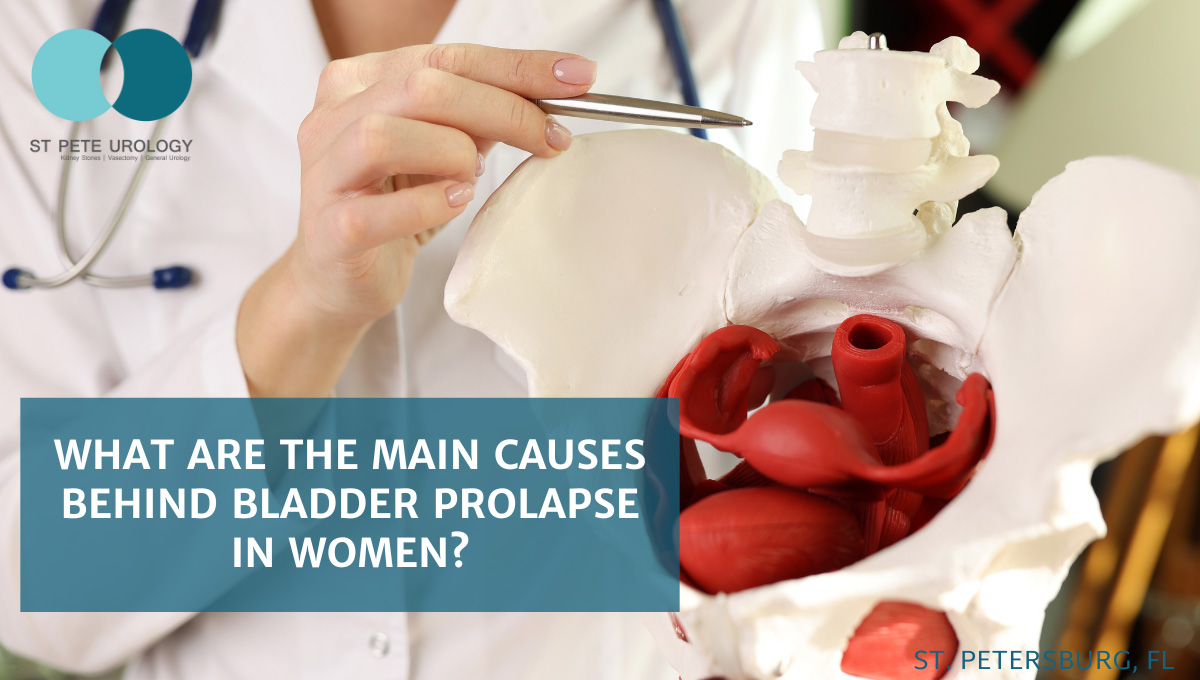3 Key Takeaways:
- Bladder prolapse, also known as cystocele, is a health condition that affects the quality of life for one in every four women over the age of 40.
- Common causes of bladder prolapse include aging and hormonal changes, pregnancy and childbirth, chronic coughing or heavy lifting, obesity, genetic factors, chronic constipation, previous pelvic surgeries, connective tissue disorders, and high-impact activities like running.
- Prevention of bladder prolapse can be achieved through maintaining a healthy weight, doing pelvic floor exercises, managing chronic cough or constipation, and avoiding heavy lifting. Early detection and appropriate treatment are essential for successful management.


Anatomy Misaligned: Understanding Bladder Prolapse
Bladder prolapse is a condition where the bladder descends into the vagina, often due to a weakness in the pelvic floor muscles that normally support it. It’s not exactly a dinner-table conversation, but with bladder prolapse affecting about one in every four women over the age of 40, it’s a conversation worth having.
Causes That Erode the Anchor: The Main Causes of Bladder Prolapse
Aging and hormonal changes, pregnancy and childbirth have all been implicated in weakening the pelvic floor muscles. These are but some of the common culprits behind bladder prolapse. It just underscores that the journey to becoming a woman, from the child-bearing years to witnessing the sunset of youth, can leave a physical imprint on one’s health.
Furthermore, lifestyle habits such as chronic coughing or heavy lifting, as well as obesity, can lead to damage in the supportive tissues of the bladder. It’s not just the ‘age-time gravity combo’ that can pull you down.
Genetic factors also play a significant role. A family history of bladder prolapse may predispose a woman to this condition. Therefore, tracing your family health history is not just an exercise in nostalgia; it’s a small step for a huge gain in preventing bladder prolapse.
Prolapse Contributors: Other Factors
Contributors to bladder prolapse don’t stop there. Chronic constipation, previous pelvic surgeries, connective tissue disorders, and high-impact activities like running can play their part in bringing about this inconvenient condition. Remember, your health is a symphony, and bladder prolapse is a discordant note that disrupts its harmony.
Prevention: An Ounce Worth a Pound of Cure
Maintaining a healthy weight, doing pelvic floor exercises (like Kegel exercises), managing chronic cough or constipation, and avoiding heavy lifting can all help in reducing the risk of bladder prolapse. So ladies, remember, prevention is the key.
Decoding the Mystery: Symptoms and Diagnosis of Bladder Prolapse
Watch out for symptoms. Common signs could include a feeling of fullness or pressure in your pelvis and lower back, or a bulge at the vaginal opening. Consultation and physical examination by trained urologists are essential for an accurate diagnosis.
Treatment: Your Path to Recovery
Bladder prolapse is not a life sentence. Nonsurgical interventions like lifestyle changes, pelvic floor physical therapy can help. However, in certain cases, surgical interventions could be needed. It’s all about individual circumstances and effective, personalized treatment plans.
Conclusion: Take Control, Seek Help
Bladder prolapse affects numerous women, but it does not have to control your life. Early detection and appropriate treatment are your allies in this fight. You are not alone in this. With the help of urologists in St. Petersburg, FL, such as those at St Pete Urology, you can navigate this journey with confidence and regain control of your health. Remember, dear reader, your health is in your hands. Take action, get the help you need, and remember, every woman is more than just a statistic.
References:
- “Bladder Prolapse (Cystocele) – Symptoms – Urology Care Foundation.” https://www.urologyhealth.org/urology-a-z/b/bladder-prolapse-(cystocele).
- “Pelvic floor exercises – The Royal Women’s Hospital.” https://www.thewomens.org.au/images/uploads/fact-sheets/Pelvic-floor-exercises-210319.pdf.
- “5 Things I Wish All Women Knew About Pelvic Organ Prolapse | ACOG.” https://www.acog.org/womens-health/experts-and-stories/the-latest/5-things-i-wish-all-women-knew-about-pelvic-organ-prolapse.




